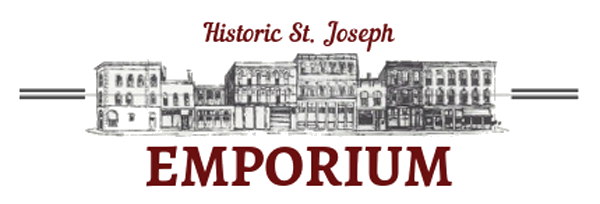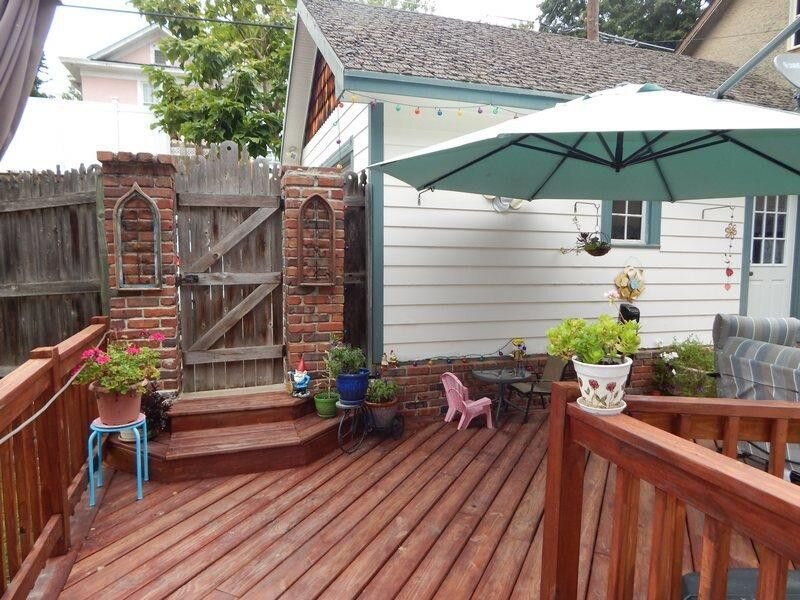Purchase Price $150,000
4 bed · 2 bath · 2,900 sqft
Beautiful, stately home with inviting foyer, library/office, 4 bedrooms, main floor laundry, HUGE living room with fireplace, awesome attic space, detached garage. Roof is 3 years old, tankless water heater, newer HVAC, PEX. Efficient kitchen has center island sink with breakfast bar, as well as gorgeous built-in china cabinet. Pocket doors between kitchen and living room, as well as between the living and dining rooms.
Contact: Tracy Tietjens at ReeceNichols IDE Capital Realty, LLC
Call: 816-351-1868
House History & Gallery
The William Prey House at 2527 Felix is a charming frame home built in 1905 for William D. Prey. William was one of the owners of Prey Brothers & Cooper, a livestock commission company with offices in room 318 of the majestic Livestock Exchange Building on Illinois Avenue. Prey lived in the lovely home in one of the most desirable residential neighborhoods in the booming city with his wife Alta.
Though the Preys were active socially in St. Joseph and well liked and very happy in the home they built, by 1908 William’s work took them to Denver where his company had an office. Prey who was described as “an exceptionally heavy man” died of a heart attack in his office in the Denver Livestock Exchange in May 1916.
William Prey sold the home at 2527 Felix to James C. Smith, the owner of a leather processing company headquartered at 124. South 2nd Street. Smith’s business was growing, with a capital stock of $126,000 ($741,000 in today’s dollars) he had processing houses in Topeka, Wichita and in 1909 he opened in Chicago. His purchase of the lovely house on Felix St. was a statement to the good folks of St. Joseph that he was a very successful businessman. Like Prey, Smith’s business meant that he soon moved.
Elizur S. Castle, a prominent St. Joseph attorney and his wife Lydia V. purchased the home in about 1911. The Castle family lived here longer than anyone else in its history.
Elizur was a well known lawyer who had been involved in one of the most notorious cases of the late 19th century – in 1891 Harry Russell stumbled in to Castle’s law office with his face badly beaten and he told the lawyer he wanted to sue his wife for divorce. Russell claimed that he had been beaten by a man who was lodging at his house and who was having an affair with his wife. According to witnesses at a lawsuit brought in 1894 by Russell against Castle, the attorney convinced Russell to deed his property to him [Castle] so that the wife could not get it in a divorce. Russell was told that the property would be held in trust for his young daughter. In order to secure Russell’s signature on the deed, it was alleged that Castle and his co-conspirators had the poor man arrested. After Russell signed the deed his divorce from his wife became final, but the couple remarried (to each other) and brought suit against Castle to secure the property. The court found in the Russells’ favor and Castle later counter-sued alleging that the Russells had not paid him. The newspapers covered this rather squalid story in great detail during the first months of 1894.
The scandal was long past when Elizur and Lydia purchased the home, but certainly some of the neighbors remembered. But any worries that they might have had about their somewhat notorious neighbor would have soon been put to rest as the couple lived a quiet life with their family at the home. Elizur went to his office in room 412 at the German American Bank Building each day, conducting a respectable practice. Their son, Clarence won a Rhodes scholarship to study at Oxford University and served in the American Embassy in Madrid, Spain during the First World War. Unfortunately, by 1919 Elizur’s heath was failing and he and Lydia went to California in the hopes that the warmer climate would effect a cure. It did not, and Elizur died in May 1920 and his body returned to St. Joseph for the funeral and burial.
Following Elizur’s death, Lydia continued to live in her lovely home for more than two decades. The 1930 census indicates that she owns the house with no mortgage. Despite that, the widow seemed to have needed additional income – or perhaps she was just lonely – she began to take in boarders. The women who shared the home with Lydia could best be described as “respectable.” Among them were Helen Cormany, who made her living as a court reporter; Vida Gall, a saleslady at a shoe store; and Faye Slater, a public school teacher. In 1941, Lydia’s health was such that she moved to the Saxton Nursing Home at 2421 Francis where she died of apoplexy in 1944.
While Lydia was in the nursing facility, the house was rented to Robert A. Smithson and his wife Hazel. Smithson was a Major in the Air Force. The Smithsons did not stay long and by 1949 the home had been sold to Charles and Audrey H. Gay. Charles was a clerk for the Chicago, Burlington, & Quincy Railroad. As was becoming much more common at this time, Audrey also worked – she was a saleswoman for Townshend and Wall. In the early 1950s, the Gays began to rent out part of the house.
The William D. Prey House at 2527 Felix has a colorful history befitting its charm and allure. The house was built to be an appropriate home for members of St. Joseph’s well-off commercial class and the details such as the fireplace, pocket doors, and wonderful woodwork make this a grand place to call home.













